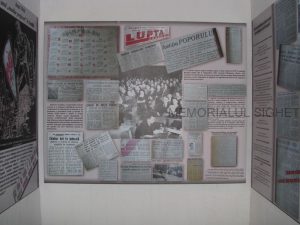“Article 209” of the Penal Code was the “black hole” of the communist justice 
system. A third of political convictions after 1948 were handed down on the basis of this article, which defined with diabolical ambiguity “machination against the socialist order” and “machination against state order”. On this pretext one could be
convicted for taking part in an anticommunist organisation, for refusing to join a trade union or collective farm, for poking the eyes out of an official portrait, or quite simply for telling a joke.
The sentences were decided by activists and prosecutors, and later by communist magistrates, and depended upon the “social peril” presented by the accused.
Sentences became ever harsher over the years, and by 1959 the death sentence could be handed down for an offence punishable with just seven years imprisonment in 1948-49.
In order to demonstrate to what lengths the sadism of the justice system could go, on one wall of the room we have posted the motives for which “Article 209” used to be invoked.
The sixty-four case studies have been detailed not only according to the criteria of seriousness or notoriety, but also according to diversity of profession, education, age (“Article 209” did not exempt even minors), sex, religious denomination, political party, and, not least, motives.
The statistical calculations we have made within the framework of the CISAC “Census of the Prison-camp Population” reveal that at least 180,000 persons were convicted using “Article 209”.
In the CISAC archive we have the names of 23,378 of these persons, whom you can see projected onto the wall of the room, although this is small recompense for the memory of the unknown many.









